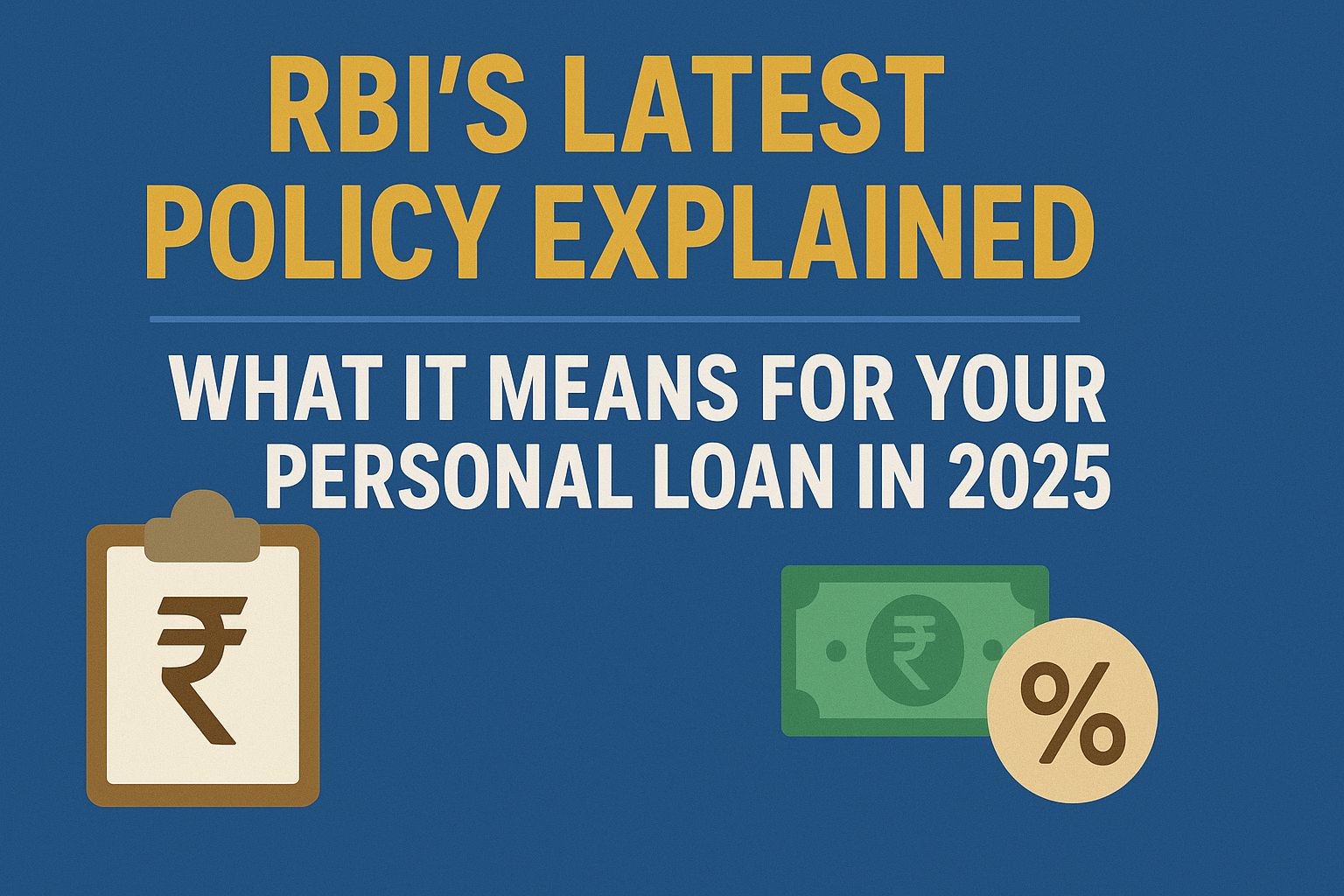The Reserve Bank of India (RBI) plays a central role in shaping the country’s financial and economic landscape. Every time the RBI announces a new monetary policy, it impacts the way people borrow, spend, and invest. In 2025, the latest RBI policy has once again brought personal loans into the spotlight, influencing interest rates, EMIs, refinancing options, and overall borrowing costs.
This article breaks down the recent RBI decision, explains why it matters, and highlights how it directly affects your personal loans.
What is the RBI’s Monetary Policy?
The RBI uses monetary policy to manage inflation, control money supply, and maintain financial stability. The most talked-about tool in these policies is the repo rate—the rate at which commercial banks borrow money from the RBI. When the repo rate changes, lending rates across banks also shift, affecting home loans, car loans, and especially personal loans.
- Higher repo rate → Costlier loans, higher EMIs.
- Lower repo rate → Cheaper loans, lower EMIs.
The Latest RBI Decision in 2025
In its most recent policy review, the RBI decided to keep the repo rate unchanged at 6.50%. The central bank cited inflationary pressures, global uncertainties, and the need to maintain growth as the main reasons for this stance.
While some borrowers were expecting a rate cut, the RBI preferred caution. By holding rates steady, the central bank aims to keep inflation under control while ensuring that borrowing does not become excessively cheap, which could fuel unnecessary demand.
How Does This Affect Personal Loan Borrowers?
Personal loans are usually unsecured, meaning they are not backed by collateral like a house or car. Because of this, they carry higher interest rates compared to other loans. The RBI’s decision directly impacts these loans in several ways:
1. Impact on EMIs
Since most personal loans are linked to floating interest rates, any change in the repo rate trickles down to your monthly installment (EMI).
- With no change in repo rate this time, borrowers will continue to pay the same EMIs.
- However, if inflation rises and RBI hikes rates in the future, EMIs could go up.
2. Cost of Borrowing
New borrowers will not see immediate relief in interest rates. Personal loan interest rates will stay in the current range of 10% to 18%, depending on the borrower’s credit profile. This means that borrowing costs remain steady but are still considered high compared to secured loans.
3. Refinancing and Balance Transfers
Many borrowers transfer their personal loan balances to banks offering lower rates. Since the RBI has not reduced repo rates, banks are unlikely to aggressively cut personal loan interest rates. As a result:
- Balance transfer options remain limited.
- Borrowers may not save significantly by shifting lenders at this stage.
4. Creditworthiness Matters More
With stable policy rates, lenders will continue to rely heavily on a borrower’s credit score and repayment history. A high CIBIL score (750+) remains the best way to secure lower interest rates despite RBI’s neutral stance.
Why the RBI’s Policy Matters for the Average Borrower
Even if the repo rate does not change dramatically, the RBI’s decisions set the tone for future borrowing costs. Banks, NBFCs, and digital lenders all look to RBI’s guidance before adjusting loan products. Here is why you should care:
- Planning a New Loan: If you are considering a personal loan, factor in that rates may stay stable for a while. Waiting for a rate cut may not be practical.
- Managing Current Debt: If you already have a loan, keep monitoring RBI policies. A future hike could increase EMIs, so having an emergency fund is wise.
- Refinancing Strategy: Instead of waiting for rate cuts, improving your credit score could be the smarter way to access cheaper loans.
Practical Tips for Borrowers in 2025
Check Your Credit Score Regularly
Lenders are offering preferential rates to high-score borrowers. Use this to your advantage.
Consider Fixed vs Floating Rates
Most personal loans are floating, but some lenders provide fixed-rate options. If you expect future hikes, fixed rates can shield you.
Avoid Multiple Loan Applications
Too many applications lower your credit score and make you appear credit-hungry. Apply only when necessary.
Build a Repayment Cushion
With inflation risks, RBI could hike rates later in the year. Setting aside funds for increased EMIs will keep you stress-free.
Compare Before Borrowing
Different lenders have different risk appetites. Always compare offers from banks, NBFCs, and fintech lenders before finalizing.
The Road Ahead
The RBI has adopted a wait-and-watch approach in 2025, prioritizing inflation control over aggressive rate cuts. For personal loan borrowers, this means stability in the short term but potential volatility if economic conditions change.
Borrowers must remain vigilant, track RBI announcements, and manage their loans proactively. While the latest policy may not immediately reduce borrowing costs, understanding its impact allows you to make smarter financial decisions.
also read:FinTech Revolution 2025: UPI, Digital Wallets, Robo-Advisors, and Online Trading Platforms
Conclusion
The RBI’s latest monetary policy holds the repo rate steady at 6.50%, signaling stability but also caution in a time of global and domestic uncertainties. For personal loan borrowers, this means EMIs remain unchanged, refinancing options are limited, and borrowing costs stay on the higher side.
The smart move is not just to wait for policy shifts but to strengthen your financial profile—improve your credit score, plan repayments, and compare lenders carefully. In a world where interest rates can change overnight, being proactive is the best defense against rising borrowing costs.






